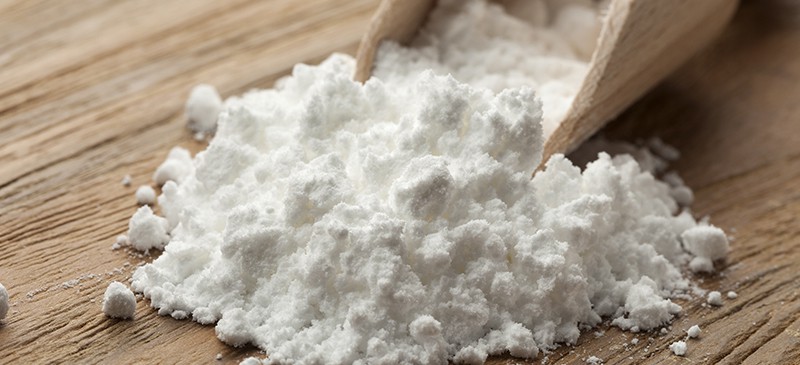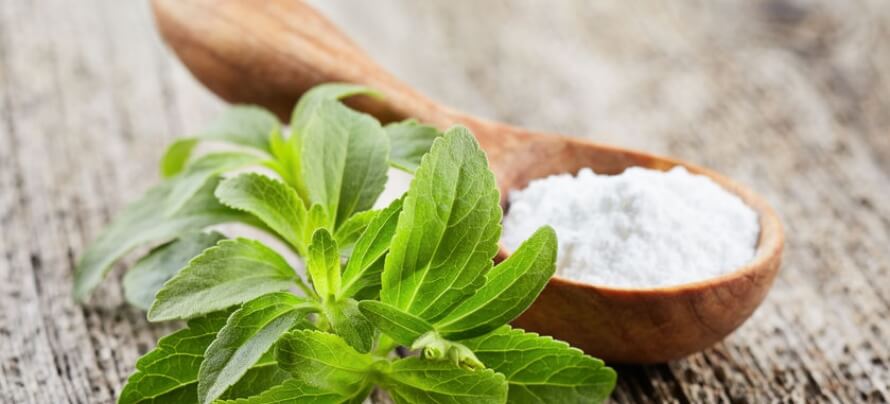What Is Maltodextrin and Is It Bad for You? What 30 Studies Say
Key Takeaways
Maltodextrin is a high glycemic index polysaccharide sugar made from starch, and it’s used to improve the texture, flavor, and shelf life of many processed foods.
Most research shows maltodextrin is just as safe as regular table sugar, and doesn’t damage your gut bacteria, promote tooth decay, or contribute to weight gain any more than other kinds of carbs.
Keep reading to learn exactly how maltodextrin affects your health and a few of the benefits of maltodextrin.
You’re at the supermarket stocking up on groceries.
Being the health-conscious consumer you are, you peek at the nutrition labels of several of the items on your list before chucking them in your cart.
And one ingredient keeps popping up over and over: maltodextrin.
Nowadays, it seems like you can’t look at a single nutrition label without seeing that word, whether you’re looking at pasta, peanut butter, soup, or even Splenda.
You’ve probably heard quite a few things about this ingredient, too.
Maybe you’ve heard it’s a dangerous “chemical” added to processed foods.
Or maybe you’ve heard it’s a source of “empty calories” linked to obesity, diabetes, and malnutrition.
Or perhaps you’ve heard it’s a source of simple sugar found in energy bars and drinks—something helpful for hardcore endurance athletes but unhealthy for regular people.
Is any of this true?
Keep reading to find out!
Table of ContentsWhat Is Maltodextrin?Which Foods Contain Maltodextrin?Is Maltodextrin Safe?Does Maltodextrin Hurt Your Gut Microbiome?Does Maltodextrin Cause Tooth Decay?Does Maltodextrin Cause Obesity and Type 2 Diabetes?What Are the Potential Health and Performance Benefits of Maltodextrin?Maltodextrin and Endurance PerformanceMaltodextrin and Recovery After SurgeryWhat Is Digestion-Resistant Maltodextrin?Potential Health Benefits of Resistant MaltodextrinWhat Are the Side Effects of Resistant Maltodextrin?What Are the Best Alternatives to Maltodextrin?The Bottom Line on Maltodextrin
What Is Maltodextrin?
Maltodextrin is a polysaccharide, which is a type of carbohydrate made up of a number of other sugar molecules.
Here’s what the molecule looks like:

To better understand what maltodextrin is, it’s worth quickly reviewing the three different kinds of sugar molecules:
Monosaccharides (mono- meaning “one”) are carbohydrates entirely composed of a single kind of sugar molecule such as glucose or fructose.
Oligosaccharides (oligo– meaning “few”) are carbohydrates composed of two to ten monosaccharide molecules such as sucrose (glucose + fructose) and raffinose (galactose + glucose + fructose).
Poysaccharides (poly– meaning “many”) are carbohydrates composed of ten or more (and sometimes hundreds or thousands) of sugar molecules such as starch, cellulose, and maltodextrin.
Maltodextrin falls into the last category, as it’s a very long chain of repeating glucose molecules connected together.
To produce pure maltodextrin, starchy foods such as wheat, corn, potatoes, and rice are cooked in water and then exposed to various acids and enzymes to separate the maltodextrin from other sugars.
This process is referred to as hydrolysis, and it’s used in the production of a number of other products like hydrolyzed whey protein powder, hydrolyzed collagen, and soy sauce. After this process, the liquid containing maltodextrin is purified, filtered, and spray-dried to create a white, odorless, and nearly flavorless powder.
Here’s what the finished product looks like:

Regarding its nutritional value, maltodextrin has no vitamins or minerals, and it is 95% carbohydrate and 5% water.
As you probably know, each gram of carbohydrate contains 4 calories. Therefore, one gram of maltodextrin contains 0.95 grams of carbohydrates and around 3.8 calories.
Like glucose, white bread, and other simple carbohydrates, maltodextrin has a high glycemic index (GI) of approximately 100. This is because maltodextrin molecules are broken down in the intestines into smaller glucose units that are quickly absorbed, causing blood glucose levels to spike.
Summary: Maltodextrin is a high glycemic index polysaccharide sugar made from starch, and it’s usually found in the form of a white, odorless, and nearly flavorless powder.
Which Foods Contain Maltodextrin?
While the fitness community usually only associates maltodextrin with sports drinks for improving athletic performance, it actually has several other uses.
More specifically, maltodextrin is often added to foods in order to:
Preserve flavor
Thicken products by helping other ingredients bind together
Improve texture and mouthfeel
Extend shelf life
Replace sugar or fat while preserving texture and structure
With the above in mind, it’s no surprise a large number of highly processed foods and drinks may contain maltodextrin, including:
Low-calorie sweeteners
Sports drinks
Salad dressings
Spreads, margarine, and butter
Mayonnaise and dairy products
Breakfast cereals and baked goods
Snacks, soda, and candy
Soups and frozen meals
Protein bars and powders
Baby food and infant formulas
Quite a list!
Before you start culling all of the foods in your pantry that contain maltodextrin, though, it’s worth taking a moment to see how this ingredient really affects your health.
Summary: Maltodextrin is often added to processed foods and drinks, such as infant formulas, low-calorie sweeteners, baked goods, snacks, frozen meals, and protein bars, to preserve flavor, act as a thickening agent, improve texture, and extend shelf life.
Is Maltodextrin Safe?
According to the United States Food and Drug Administration (FDA), maltodextrin is a GRAS (Generally Recognized as Safe) food additive that’s completely digested and nontoxic.
Similarly, according to a 2016 review conducted by scientists at the Nestlé Research Center, substituting maltodextrin in place of glucose doesn’t seem to have any positive or negative health effects.
Of course, it’s important to remember that, according to the World Health Organization, “free sugars” (i.e., added refined sugars) should not exceed 10% of our total daily energy intake to begin with. This isn’t necessarily because “sugar is bad” but because eating more added sugar means you’ll be getting:
More calories, which may result in a calorie surplus and, therefore, weight gain (and all of the associated health consequences of being overweight or obese)
Fewer beneficial nutrients, such as vitamins, minerals, fiber, phytochemicals, protein, and so on
So, it’s not that maltodextrin is bad for you. In fact, like most sugars, it’s more or less benign in moderation, and it’s unlikely to cause any health problems so long as you don’t eat large amounts of it for long periods of time.
Now, you may have heard a fitness guru or two claim something along the lines of “Maltodextrin contains genetically modified organisms (GMOs) and it will wreak havoc on your gut!”
Is that true, though?
Let’s find out.
Does Maltodextrin Hurt Your Gut Microbiome?

The gut microbiome refers to the various kinds of bacteria that live in the intestines, and these bacteria play an important role in a number of different functions in the body.
How so?
Well, consider, for example, that some of these bacteria help:
Protect against disease-causing pathogens such as Escherichia coli, Salmonella enterica, and Clostridium difficile
Aid in the digestion and absorption of nutrients like protein, fiber, and plant polyphenols
Produce micronutrients like vitamins K, B3, and B12
Protect against toxins like the EHEC shiga, Clostridium difficile, and Bacillus cereus toxins
It’s also thought that maintaining a large diversity and proper balance of different microorganisms in our gut may be important for good health.
This is because research has shown that changes in the gut microbiome’s composition or function are associated with diseases and health conditions such as atherosclerosis, obesity, allergies, diabetes, and inflammatory bowel disease (IBD).
Circling back to maltodextrin, while there’s a general lack of studies looking at its impact on gut bacteria, some research suggests that simple sugars, like maltodextrin, may negatively affect the composition and function of the gut microbiome.
There are a few reasons you don’t want to take this research too seriously, though:
Pretty much all the relevant studies are in animals (usually mice or pigs), and the results are not always translatable to humans. (The anatomy and function of the human intestinal tract is different in many ways, and hosts a different selection and number of bacteria).
Most of these studies involved feeding these animals much larger quantities of sugar than a human would get from a balanced diet. For example, in this study from the Korea Food Research Institute, the scientists fed mice diets with 65% of the calories coming exclusively from added sugars (glucose/fructose and sucrose). That’s like a human eating 325 grams—nearly three quarters of a pound—of pure sugar per day.
Much of the research on the effects of the gut microbiome on human health is speculative, and we still know very little about how small changes in diet, exercise, and other habits affect its composition, and even less about how this might affect our health.
At this point, there’s probably much more that we don’t know about the links between our diet, the gut microbiome and our health than what we do know. That is, we know the composition and function of the gut microbiome is important for good health, but any claims about how individual nutrients may affect health through changes in the gut microbiome are more speculation than fact.
So, when people say that this or that food product or chemical or supplement will drastically change your health by altering your gut bacteria, take their claims with a giant shaker full of salt.
Summary: Eating small to moderate amounts of maltodextrin is highly unlikely to negatively affect your gut bacteria.
Does Maltodextrin Cause Tooth Decay?
Tooth decay is the breakdown of teeth caused by acids made by oral bacteria.
Here’s how the process works:
Bacteria feed on food debris or sugars on the surface of your teeth, which causes them to secrete acid. This acid then dissolves the hard tissues of the teeth (the enamel, dentin, and cementum), which results in tooth cavities.
As you can guess, the bacteria in your mouth love to gobble up maltodextrin.
Thus, it’s not surprising that maltodextrin can contribute to tooth decay by feeding acid-producing bacteria in your mouth.
Before you get too worked up, though, keep in mind that:
This is true of all forms of sugar, from the natural, organic, non-GMO, fair-trade certified starch in your bananas to high-fructose corn syrup from a can of Mountain Dew.
Research shows that maltodextrin is actually less effective at feeding acid-producing bacteria than other kinds of sugars.
According to one study conducted by scientists at the University of Leeds in 10 adult subjects, drinks containing maltodextrin were found to stimulate acid production significantly less than drinks containing sucrose (table sugar).
In other words, drinking regular table sugar caused the bacteria in their mouths to produce much more acid than drinking maltodextrin.
This doesn’t mean you should replace all of the table sugar in your house with maltodextrin, of course. It just means maltodextrin isn’t uniquely harmful to your teeth and may even be slightly less harmful than some similar alternatives.
The best way to protect your teeth from the negative effects of maltodextrin (and all other sugars) is to practice good oral hygiene, which includes brushing and flossing daily, and consuming added sugar in moderation.
Who would’ve thought, right?
Summary: There’s no evidence that maltodextrin promotes tooth decay more than any other kind of sugar, but it can if consumed in excessive amounts and you don’t practice good oral hygiene.
Does Maltodextrin Cause Obesity and Type 2 Diabetes?

Many people, especially low-carb evangelists, believe maltodextrin contributes to obesity and type-2 diabetes. Here’s their thinking in a nutshell:
Carbs, especially in the form of simple sugars, are fattening.
Since maltodextrin is made up of simple sugars, and since ingesting it causes blood sugar and insulin levels to rise, it’s bound to lead to obesity, insulin resistance, and type-2 diabetes.
Aaaannnnddd pretty much all of that thinking is wrong.
It’s true that maltodextrin is a simple sugar, that it has a high glycemic index, and that eating it causes insulin and blood sugar levels to rise, but none of this means it’s fattening.
You can learn more about why this is in these two articles, but here’s the gist:
Contrary to what some self-proclaimed experts and fake Internet doctors claim, neither sugar, insulin, or high-glycemic index carbs cause obesity or type 2 diabetes.
Instead, the root cause of both of these conditions is this:
Eating too much relative to your activity levels.
In other words, calories in versus calories out.
Or, more specifically, a prolonged imbalance between the amount of energy you consume and the amount of energy you expend, leading to weight gain and elevated blood glucose and insulin levels.
“But I’ve seen research showing higher intakes of simple sugars cause obesity and diabetes!” you might be thinking.
Well, not really.
What you’ve actually seen is research finding that higher intakes of simple sugars are associated with a higher incidence of obesity and diabetes—a big difference!
You see, it makes perfect sense research would detect these associations, as people with obesity don’t just eat too much chicken and broccoli—instead, they usually overeat tasty and highly palatable junk food. The kind of junk food that also tends to be high in, among other things, added sugars.
Here’s another fun fact to help drive this point home: You know what else is associated with obesity and type 2 diabetes? Diet soda consumption.
Is this because diet soda causes insulin and blood glucose levels to spike? Nope—it’s because people who generally need to lose the most weight also tend to drink a lot of diet soda. Thus, it’s not the diet soda that’s the problem, but the fact that they’re overweight to begin with.
The same thing is true of maltodextrin.
Although many overweight or obese people and those with type 2 diabetes eat a lot of maltodextrin, they also eat a lot more calories than they should, and it’s these extra calories that are to blame for their health troubles.
Here’s the take-home message: neither maltodextrin nor added sugars are fattening per se or will lead to insulin resistance when consumed in moderation as part of an overall healthy lifestyle.
Summary: Maltodexrin does not promote weight gain or obesity more than other kinds of carbohydrates. Overeating maltodextrin (and any other source of calories) is what leads to weight gain, obesity, and diabetes.
What Are the Potential Health and Performance Benefits of Maltodextrin?
As a general rule, you want to minimize your intake of processed, refined, simple sugars like maltodextrin.
These sugars aren’t inherently bad for you, but they’re easy to overconsume and don’t contain any micronutrients, fiber, or much of anything other than calories.
Instead, you’re better off getting most of your calories from nutritious, minimally-processed foods like lean meats, fish, legumes, nuts, and whole grains.
That said, there are a few instances where eating simple sugars like maltodextrin might be a good idea.
Maltodextrin and Endurance Performance
In the world of endurance training, maltodextrin is often added to sports drinks to help athletes refuel and rehydrate during exercise.
To better understand why maltodextrin is added to sports drinks, though, we should first briefly talk about the causes of fatigue during endurance training.
In general, the most important nutritional factors responsible for fatigue and decreased performance during endurance training are:
Depletion of the body’s glycogen stores
Dehydration from the loss of water through sweat and breathing
With the above in mind, sports drinks are meant to improve performance by helping to replenish the body’s glycogen stores and hydration levels.
That’s why sports drinks typically contain carbohydrates and water.
You can probably see where I’m going with this, right?
Since sports drinks contain high glycemic index carbohydrates, and since maltodextrin is a high glycemic index carbohydrate, it makes sense it would be a candidate for inclusion in sports drinks.
Why go with maltodextrin, though, and not with another high glycemic index carb, like glucose?
Well, theoretically, what makes high glycemic index polysaccharides (such as maltodextrin) a better fuel than monosaccharides (such as glucose) for endurance athletes is their high molecular weight.
Without getting into too much detail, the “ideal” kind of carbohydrate during exercise is one that contains as much energy as possible in as few actual carbohydrate particles as possible, and maltodextrin fits the bill.
This is because there’s a limit to the percentage of carbohydrate particles from a single carbohydrate source that can be included in a drink before its osmolality (the concentration of particles dissolved in liquid) supersedes that of the blood. If it does surpass the blood’s osmolality, it can cause a net flow of water from the blood to the gut, which leads to gastrointestinal discomfort.
Think of it this way:
If a sports drink isn’t efficiently absorbed by the gut, the carbohydrate molecules of the sports drink sit in the intestine where they pull water from the body into the gut, which is an awful experience when you’re doing an intense workout. This is especially true during long workouts where you need to consume large amounts of carbs to maintain your performance.
Monosaccharides like glucose tend to be particularly bad in this regard, as they aren’t efficiently absorbed by the gut during exercise. Polysaccharides like maltodextrin, though, are readily absorbed and are less likely to produce these negative effects.
Summary: Maltodextrin is an ideal carb source during endurance exercise, because it’s more easily absorbed and digested than other kinds of sugars like glucose.
Maltodextrin and Recovery After Surgery
If you’ve ever been unfortunate enough to undergo surgery, you’ll know from experience patients are usually instructed to completely fast for at least six to eight hours before their operation.
The reason for this recommendation is to reduce the risk of pulmonary aspiration of gastric content, or, put simply, the risk of having food leak out of your stomach and into your windpipe while you’re knocked out.
However, this prolonged fasting period may negatively affect the patient’s recovery by increasing the body’s stress response to surgery.
More specifically, surgery generally causes a catabolic state, with temporary insulin resistance, inflammation, and postoperative discomfort, all of which may be worsened by the traditional prolonged fasting period before surgery.
This is where maltodextrin enters the picture. Some research shows that consuming maltodextrin in the hours before surgery may reduce the negative effects just listed and speed up recovery after surgery.
Now, I know what you may be wondering. Why use maltodextrin and not a different source of carbohydrates?
Well, there are generally two reasons why maltodextrin is used:
As you learned a moment ago, maltodextrin has a high molecular weight, so it can provide more easily digestible energy while limiting osmolality, enhancing gastric emptying, and preventing gastrointestinal discomfort.
Maltodextrin is odorless and tasteless, which means it can be effectively used in research without participants being able to tell whether they’re in the control or intervention group. In other words, it reduces the chances of the placebo effect interfering with the results.
Summary: Consuming maltodextrin before surgery can reduce the body’s stress response to surgery, which may hasten healing and recovery.
What Is Digestion-Resistant Maltodextrin?
While you may have heard of regular maltodextrin, you may not have heard of another type of maltodextrin called digestion-resistant maltodextrin, or simply resistant maltodextrin.
Resistant maltodextrin is a type of resistant starch that’s indigestible in the small intestine but is still fermented in the large intestine by bacteria. This fermentation process produces beneficial compounds like short-chain fatty acids (SCFA) like butyrate and vitamin K2.
If this description brings dietary fiber to mind, then you’d be right on the money, as resistant maltodextrin is chemically very similar to soluble fiber.
The production of resistant maltodextrin involves the hydrolysis of starch by heat and hydrochloric acid, followed by exposing maltodextrin to a variety of enzymes (called amylases).
This process breaks the bonds that link the sugar molecules together and creates new bonds that are indigestible, essentially transforming maltodextrin into a type of dietary fiber. This is followed by a refinement and spray-drying process that results in a white, odorless, and flavorless powder.
Unlike regular maltodextrin, which provides around 3.8 calories per gram, resistant maltodextrin provides around 2 to 2.5 calories per gram, similar to the number of calories provided by soluble fiber.
Summary: Digestion-resistant maltodextrin is maltodextrin that’s been chemically modified so it provides fewer calories to the body—2 to 2.5 calories per gram instead of 3.8 calories per gram, to be exact.
Potential Health Benefits of Resistant Maltodextrin
As resistant maltodextrin is very similar to dietary fiber, it makes sense it could potentially provide many of the health benefits associated with dietary fiber consumption.
Indeed, resistant maltodextrin has been found to result in many physiological benefits, including improved body composition and blood glucose control.
For example, one study in 120 overweight men conducted at the Tongji University Medical College in China found that supplementing with 34 grams of resistant maltodextrin per day for 12 weeks resulted in reduced feelings of hunger and lower calorie intake, as compared to supplementing with regular maltodextrin. Unsurprisingly, the people who consumed resistant maltodextrin also lost more weight and body fat and experienced greater improvements in insulin sensitivity and blood glucose control.
Being a type of dietary fiber, it’s also not surprising that resistant maltodextrin appears to benefit digestive health, especially by relieving constipation.
More specifically, research shows that consuming resistant maltodextrin may improve stool volume and consistency.
That’s not all, though. A recent systematic review and meta-analysis conducted by scientists at the Matsutani Chemical Industry Co., Ltd, (a modified starch producer) reported that people who consumed resistant maltodextrin had healthier, more regular bowel movements, which is a sign of overall digestive health.
Finally, some research suggests that resistant maltodextrin can have anti-inflammatory effects. This may be because the fermentation of resistant maltodextrin produces butyrate, a short-chain fatty acid that may help reduce gut permeability and inflammation.
For example, in a study conducted by scientists at Tabriz University, researchers gave 55 women with type 2 diabetes 10 grams of resistant maltodextrin or placebo every day for 8 weeks, and measured various inflammatory markers in their blood that are normally associated with conditions like cancer. They found that consuming the resistant maltodextrin reduced markers of inflammation by 13 to 26% from the start of the study, while no significant changes were seen in the placebo group.
Summary: Some research shows eating small amounts of digestion-resistant maltodextrin may help reduce hunger and calorie intake and markers of inflammation, although it’s too early to say if there are any significant long-term benefits to eating it.
What Are the Side Effects of Resistant Maltodextrin?
Resistant maltodextrin seems to be safe and may improve health for most people, but eating too much can lead to some unwanted (and embarrassing) side effects.
The potential side effects of consuming too much resistant maltodextrin include:
Bloating and gas
Abdominal discomfort
Diarrhea
There are two potential reasons for these side effects:
Resistant maltodextrin is fermented in the large intestine by colon bacteria, producing gases that can cause bloating, flatulence, and abdominal pain.
Resistant maltodextrin, due to its low molecular weight, may increase osmotic pressure in the digestive tract, drawing too much water into the bowels and stimulating diarrhea.
Again, like with almost everything, it’s overconsuming resistant maltodextrin you would need to worry about. There’s little evidence consuming small amounts will cause any of these problems.
Summary: The main side effects of digestion-resistant maltodextrin are bloating, gas, abdominal discomfort, and diarrhea, but these only tend to occur when you consume large amounts.
What Are the Best Alternatives to Maltodextrin?

While maltodextrin generally appears to be safe when consumed in moderation, you may still be concerned about your maltodextrin intake.
As such, the logical thing to do is to buy fewer prepackaged, highly-refined foods, and start making your own healthy recipes at home instead.
However, many of the recipes you’ll find for baking your own healthy snacks include maltodextrin as a thickening agent.
Luckily, there are a number of food thickeners you may consider using in place of maltodextrin:
Tapioca starch, which is a polysaccharide extracted from the roots of the cassava plant. Tapioca starch can be used to make cakes, pies, cookies, and other baked goods, and it’s also used as a thickening agent for soups, gravies, sauces, and other liquid foods.
Arrowroot starch, which is also a polysaccharide extracted from the roots of a tropical plant—the arrowroot plant. Like tapioca starch, arrowroot starch is primarily used to thicken liquid foods like sauces and puddings.
Guar gum (or guaran), which is made from legumes called guar beans. Guar gum is a polysaccharide with thickening and stabilizing properties that’s used as a food additive and filler in many processed foods.
Pectin, which is a fiber extracted from fruits and vegetables. Pectin can be used as a thickening agent and stabilizer, and it’s a key ingredient in jams and jellies.
Summary: You can replace the maltodextrin that many baking recipes call for with tapioca starch, arrowroot starch, guar gum, and pectin.
The Bottom Line on Maltodextrin
Maltodextrin is a high glycemic index polysaccharide sugar made from starch, and it’s usually found in the form of a white, odorless, and nearly flavorless powder.
It’s usually added to processed foods as a thickening agent and to improve mouthfeel, texture, and shelf life, and it’s often found in many “healthy” foods like protein bars, low-calorie sweeteners, and protein powders.
Although some people worry about how maltodextrin might impair gut health, promote tooth decay, or contribute to obesity and type 2 diabetes, most research shows it’s perfectly safe for human consumption and unlikely to cause any health problems so long as you consume it in small amounts.
Maltodextrin is a sugar, so it can still cause health problems if over consumed, especially in place of nutrient dense, minimally processed fruits, vegetables, whole grains, nuts, and seeds.
Maltodextrin has a few benefits, too, such as:
Helping athletes rehydrate and refuel without stomach discomfort during exercise
Helping surgery patients recover faster if consumed before an operation
Another kind of maltodextrin, known as digestion-resistant maltodextrin, is a kind of soluble fiber that contains fewer calories than regular maltodextrin and may improve digestive health.
If you want to cut back on your maltodextrin intake, the best alternatives for baking are:
Tapioca starch
Arrowroot starch
Guar gum
Pectin
All in all, maltodextrin probably isn’t worth worrying about. It’s usually only found in processed foods and in relatively small amounts, so as long as you stick mostly to nutritious, minimally processed whole foods, you’re unlikely to consume enough maltodextrin to encounter any health problems.
If you liked this article, please share it on Facebook, Twitter, or wherever you like to hang out online! 
What’s your take on maltodextrin? Have anything else to share? Let me know in the comments below!
The post What Is Maltodextrin and Is It Bad for You? What 30 Studies Say appeared first on Legion Athletics.
Read more: legionathletics.com



















